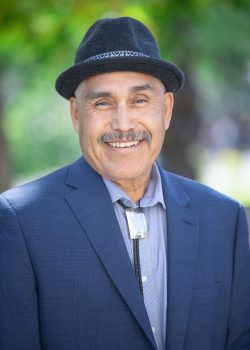On March 27, 2020, I watched a Facebook video, of our tribal Chairman, Mark Fox, of the Three Affiliated Tribes, discussing the first positive case of COVID-19 on our reservation.[1] In his opening remarks, which were solemn and measured, he declared that it was inevitable that the Coronavirus would reach our communities and that we needed to get ready for its immediate impacts and offered a lot of important ways this could be done. However, he said very little about how to prepare for the future of the coming plagues, which is understandable when one is in the midst of building a firewall to contain a dangerous, emerging novel threat. As he spoke, I was reminded of how the infectious disease experts had concluded that COVID-19 is much more virulent for individuals and communities that have underlying medical conditions. I winced as I thought about all the underlying health problems that exist not only on my reservation, but in most tribal communities in the United States, Canada, and around the world. Those that immediately came to mind were conditions that are often referred to as noncommunicable diseases (NCDs), that are not spread through casual contact. Diseases such as diabetes, heart disease, obesity, high blood pressure, autoimmune disorders, stroke, cancers, osteoporosis, depression, and anxiety are all regarded as NCDs.
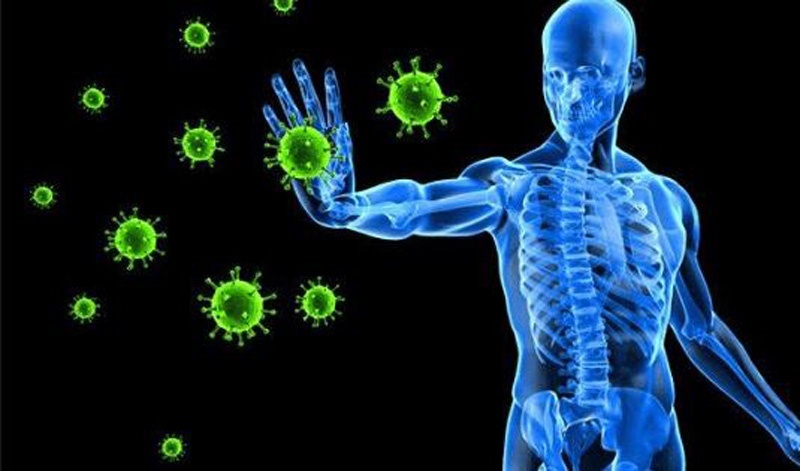 For years, we’ve known that there are many health and wellness disparities in Native communities, which are reflected in our high rates of mortality and morbidity. We’ve also been aware that for many tribal communities, access to western health care has been spotty and/or unavailable, while western medical approaches are not well-designed to prevent the spread of disease among Indigenous Peoples, and in many cases, only serve as a band-aid and temporary relief. What we’ve needed for a long time are approaches that prevent preventable western diseases and not just treat the symptoms. Approaches that enable Indigenous peoples to develop the resilience and resistance against many of the diseases that should not be making us seriously ill or killing us at disproportionate rates. We need approaches that are easy to implement, culturally appropriate, and have very long evidence-base of effectiveness that precedes western diseases.
For years, we’ve known that there are many health and wellness disparities in Native communities, which are reflected in our high rates of mortality and morbidity. We’ve also been aware that for many tribal communities, access to western health care has been spotty and/or unavailable, while western medical approaches are not well-designed to prevent the spread of disease among Indigenous Peoples, and in many cases, only serve as a band-aid and temporary relief. What we’ve needed for a long time are approaches that prevent preventable western diseases and not just treat the symptoms. Approaches that enable Indigenous peoples to develop the resilience and resistance against many of the diseases that should not be making us seriously ill or killing us at disproportionate rates. We need approaches that are easy to implement, culturally appropriate, and have very long evidence-base of effectiveness that precedes western diseases.
My interest in prevention of preventable diseases goes back to the early to mid-1980s, when I was fresh out of graduate school with my Master of Social Work degree, and became the Human Resources administrator and tribal health director for my people, the Three Affiliated Tribes. It was during this period that I saw diabetes, obesity, cancer, heart disease, stroke, macular degeneration, skin and gastrointestinal disorders, asthma, and high blood pressure rise dramatically on our reservation. I also noticed an uptick in emotional disorders such as anxiety and depression that corresponded with the rise of the physical diseases. It seemed that people were not as hardy, tough, or resilient as our great grandparents or grandparents, and were getting colds and flu much more easiIy, with greater severity, which indicated a deeply wounded and weaken immune system. However, I didn’t realize the connection between the immune system and disease back then, since western medicine, which was the dominant health paradigm at the time, did not connect the dots between spirituality, emotional health, disease and our immune system. And, if you raised such a possibility with your physician, they either ignored what you said or laughed at you.
The field of psychoneuroimmunology, which advanced the notion of a connection between psychological processes, the nervous system, the immune system, and disease did not get serious attention until 1981, following the publication of a book called, Psychoneuroimmunology. Attention was, at best, sporadic and dismissive since medicine was focusing on its next generation of designer drugs for conditions such as depression and anxiety and couldn’t be bothered with the notion that your mind, thoughts, and behavior, could heal you or make you ill. Even today, it’s taken western medicine much too long to understand that psychological disease takes a toll on one’s immune system and makes them vulnerable to other conditions, such as diabetes, cancer, suicide, or asthma. However, despite the naysayers of western medicine, I became interested in the connection and began researching the topic. Along the journey, I discovered a book by Norman Cousins, called “Head First: The Biology of Hope and the Healing Power of the Human Spirit,” which was published in 1989. I immersed myself in Cousins writings and began learning about the important role that hope, laughter, and positivity had in healing illness. I remember thinking maybe that’s why my grandma, my Dad’s mother, rarely got ill: because she was continually smiling, laughing, teasing, singing prayer songs, surrounding herself with positive people, and telling funny stories. I rarely put down Cousins book and re-read certain s
ections a number of times. In fact, I became a bit obsessed. One year (1991) when I was participating in a Sun Dance on my reservation, in-between rounds of dancing and sweat lodge and prayer, I continued reading the book and shared what I was learning with some of the other dancers.
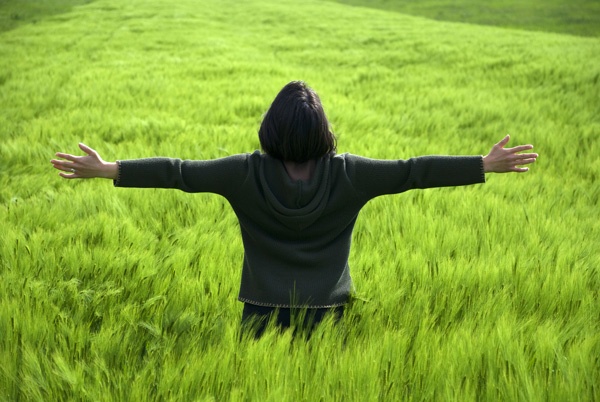 Working with my tribe, I collaborated with our local Indian Health Service (IHS), tribal community health representatives (CHRs), as well as the state of North Dakota community health nurses, to try to understand and alleviate the effects of the illnesses that we were seeing. Unfortunately, we did little to focus on prevention, probably because what we were seeing was the first big generational surge of these diseases and had no reference point for how to prevent them or treat them in a traditional tribal, holistic manner. So, it should come as no surprise that the toolbox we employed privileged pharmacological approaches aimed solely at one problem and one solution: “you have this disease so you will get this drug, or that drug, or both these drugs.” Despite the best medicines of western science, and highly trained medical professionals, the rates of diabetes, obesity, heart disease, cancer, depression, and autoimmune disorders continued to climb. And, it was not for the lack of federal funding that prevented us from preventing these diseases, it was the lack of effective, meaningful disease prevention approaches that were grounded in traditional healing knowledge and practices.
Working with my tribe, I collaborated with our local Indian Health Service (IHS), tribal community health representatives (CHRs), as well as the state of North Dakota community health nurses, to try to understand and alleviate the effects of the illnesses that we were seeing. Unfortunately, we did little to focus on prevention, probably because what we were seeing was the first big generational surge of these diseases and had no reference point for how to prevent them or treat them in a traditional tribal, holistic manner. So, it should come as no surprise that the toolbox we employed privileged pharmacological approaches aimed solely at one problem and one solution: “you have this disease so you will get this drug, or that drug, or both these drugs.” Despite the best medicines of western science, and highly trained medical professionals, the rates of diabetes, obesity, heart disease, cancer, depression, and autoimmune disorders continued to climb. And, it was not for the lack of federal funding that prevented us from preventing these diseases, it was the lack of effective, meaningful disease prevention approaches that were grounded in traditional healing knowledge and practices.
During my tenure as the tribal health director, when emerging diabetes and obesity pandemics were swiftly moving through all of our communities on our reservation, I completely supported our tribe building a dialysis center, since a number of elders in our community were getting diagnosed with diabetes and required weekly dialysis treatments. Since we had no treatment available on our reservation, our CHRs ended up driving our patients on a 200-mile roundtrip three times a week to receive treatment, which was an extreme hardship on both the driver and the patients.
I truly believed our dialysis center was a short-term solution. And, while it was saving lives in the immediate term, it would do little to solve our growing diabetes that would blossom into a pandemic in only a few years times. In my discussions with our tribal leadership, I repeatedly said that we needed to focus on preventing diabetes using lifestyle changes such as exercise and diet. In my own family, by the early 1970s my mother had developed diabetes, obesity, and high blood pressure, while my father was dealing with high blood pressure and obesity, but for some reason was able to hold off contracting diabetes until the mid-1980s. Gradually, over the years, each one of my siblings developed diabetes, and by 2020, I was the only one of 15 children that was not diagnosed with diabetes or declared to be prediabetic.
Following my experience as a tribal health director, I became interested in diving deeper into discovering what were the root causes of the western diseases that were raging on my reservation. How could people that rarely, if ever, experienced diabetes, certain cancers, asthma, or obesity now be the epicenter of these disease pandemics? Although, I admired the work that physicians and other medical personnel were doing to treat the symptoms of their patients, I was more interested in what drove native people’s health use, beliefs, and behaviors, and what could be done to prevent these preventable diseases from happening in the first place.
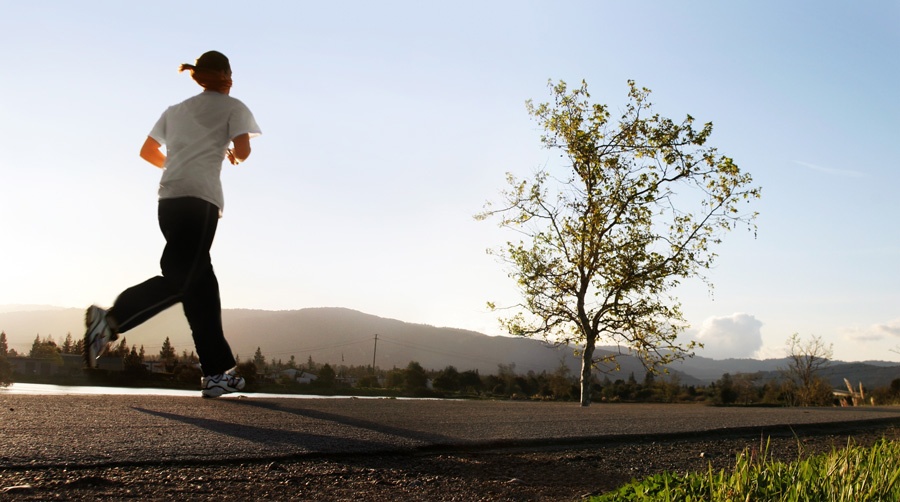
My interests in these questions, prompted me to leave my position with our tribal government and to apply for admission into the PhD social welfare program at the University of Wisconsin, Madison. I was fortunate to have had a number of wonderful academic mentors that supported my scholarly interests in American Indian health, health behavior, and health beliefs. With the guidance of two of my PhD advisors, Dr. Gary Sandefur (Choctaw) and C. Matthew Snipp (Cherokee), I completed what I believe is the only national study of the use of health services by American Indians. This research helped me understand what demographic factors predisposed Indigenous folks to disease and what health policy makers, Indigenous leaders, social workers, and health care providers could do to improve the health of native people. In my PhD program, I became familiar with health behavior and belief models that were intended to help researchers understand why certain folks failed to take actions that would prevent them from acquiring a disease or to comply with medical treatments. I was fascinated with the variables in this model that were being used to explain the health behaviors that people engaged, according to their attitudes and beliefs about themselves and disease. In particular, two factors stood out when I thought about the health behaviors of Indigenous peoples: “perceived susceptibility” and “cue to action.” First, I wondered how susceptible Native folks felt about their risk of getting diabetes, asthma, heart disease, high blood pressure, or becoming obese. Second, I wondered what cues would help them take action to prevent any of these conditions: getting concerning test results from their doctor or seeing a friend or relative with the disease. As I look back, with COVID-19 in mind, one of the factors that I wish I would have focused on in my analysis was what effects did different demographic and psychological factors have on Indigenous Peoples’ immune health and function.
In the early 1990s when I accepted my first academic position at the University of British Columbia, I began focusing much more on the effects that colonization had on the health and well-being of Indigenous Peoples. By that time, diabetes, obesity, heart disease, and cancers, and all of the other western disease pandemics on my reservation not only continued to rise, but were now seemingly becoming accepted as part of our tribal landscape. We were distracted by the building of a new tribal casino and the revenue it was generating. With the inclusion of buffets in our casino, waistlines grew, heart disease and hypertension increased, and diabetes became more widespread and severe. In 1997, at age 72, my father passed away from diabetes-related complications; my mother is still alive at age 93. Before my father’s death, he experienced a major bout of depression which had been with him for some time, due to historical trauma, along with his diabetes, obesity, and high blood pressure. His immune system plummeted and he ended up with a very serious and painful bout of shingles that took some time to resolve. My father was not the only depressed or anxiety ridden person on our reservation. Many folks that I knew had been prescribed the latest designer anti-depression and anti-anxiety medications that they swallowed up like candy.
In 2004, I accepted an academic position at the University of Kansas as a professor and the director of the Center for Indigenous Studies. The declining health I was seeing in my own family and in many tribal communities, prompted me to return to studying Indigenous peoples health and teaching health courses in our program. I taught courses that focused on Native American and minority and Indigenous global populations, covering everything from chronic diseases to global pandemics, much of it framed through the lens of colonialism. One book that I found invaluable in my classes was Laurie Garrett’s, “The Coming Plague,” published in 1994. I had read her book years earlier and met her when she visited our campus in March 2005, to give the Madison and Lila Self Graduate Fellowship Lecture. Her presentation titled, “Critical Issues in Global Public Health,” included an important discussion on the recent 2002 – 2004 Severe Acute Respiratory Syndrome (SARS) outbreak. Although SARS is also a coronavirus, COVID-19 is much more contagious and deadly.
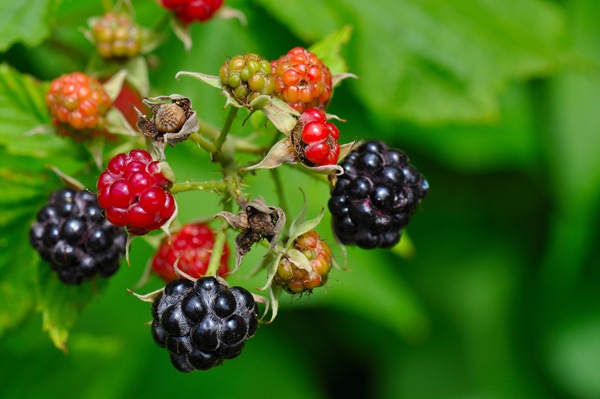 Garrett’s book details deadly outbreaks of infectious disease around the world and the emergence of new pathogens, and the old ones that have become resistant to the best microbial medicines we have. She stresses that poverty, marginalization, crowded housing, and the lack of clean water (which are realities throughout Indigenous country) are all factors that help to maintain and spread infectious diseases, and that governments and society must take aggressive action to improve these conditions. She warns that there will always be an ongoing battle between humans and infectious diseases and that prevention will require education and cooperation from all of us. I often told my students that as pandemics arise, it very likely means that we did not do enough to take appropriate preventive measures, that there is a lack of cooperation between nations in our global society to accomplish this, and we should not be surprised, nor should we say, that we were not warned when they appear. But, we must be ever on guard before they return.
Garrett’s book details deadly outbreaks of infectious disease around the world and the emergence of new pathogens, and the old ones that have become resistant to the best microbial medicines we have. She stresses that poverty, marginalization, crowded housing, and the lack of clean water (which are realities throughout Indigenous country) are all factors that help to maintain and spread infectious diseases, and that governments and society must take aggressive action to improve these conditions. She warns that there will always be an ongoing battle between humans and infectious diseases and that prevention will require education and cooperation from all of us. I often told my students that as pandemics arise, it very likely means that we did not do enough to take appropriate preventive measures, that there is a lack of cooperation between nations in our global society to accomplish this, and we should not be surprised, nor should we say, that we were not warned when they appear. But, we must be ever on guard before they return.
As someone who has studied wellness and disease prevention from an Indigenous lens, and has used diet, exercise, mindfulness, intermittent fasting, and humor, as my own personal approach to wellness, I am convinced that culturally appropriate and meaningful prevention approaches represent our best defense against many diseases, including pandemics. Gone are the days that we should solely rely on drugs to treat the symptoms of our illnesses that are preventable. Instead, we should be aggressively turning toward disease prevention strategies that are easy to implement and that we already have in our traditional tribal toolbox of stories, history, wisdom, knowledge, and intellectual property.
After listening to Chairman Fox’s missive concerning COVID-19 on our reservation, I wanted to provide response, which I hope is positive, hopeful, and meant to be a call for the return to traditional tribal preventive health approaches. At the moment, I’m sitting at home, on Treaty 1 territory in Canada, isolated with my family, our dogs, and virtual visits and conversations via Facebook and Instagram. And, as of today (April 5, 2020), there are 203 positive cases of COVID-19 in Manitoba, most of them in our city of Winnipeg. I’m hoping that the numbers will begin to flatten out soon, but that is more of a wish than a reality as cases continue to increase daily. Incidentally, while we know that COVID-19 has been spreading, often unknowingly, by asymptomatic persons who have no knowledge that they can spread the disease, it’s important to understand that racial hate can also be one of its main vectors. On April 1, 2020, police in Calgary, Alberta, arrested a 20 year old white male, “over a viral Facebook post in which he threatened to go to a nearby reserve and spread COVID-19.”[2] The story doesn’t say if the young man has tested positive for COVID-19, but his actions are eerily reminiscent of the racial hatred that prompted settler military leaders to deliberately spread smallpox among Indigenous peoples which wiped out millions.
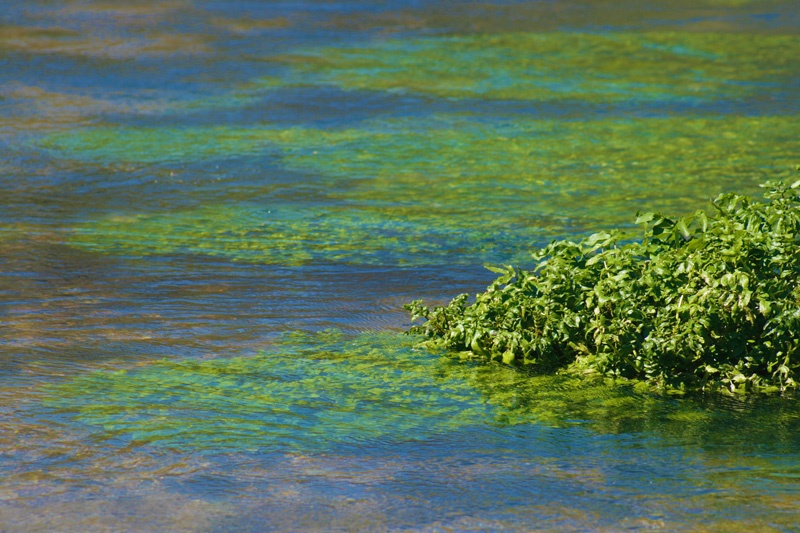 There is a growing consensus that COVID-19 will become a seasonal illness similar to that of the flu. It’s very likely, just like the seasonal flu, COVID-19 will mutate and make each year’s COVID-19 vaccine (that’s not yet available) to be hit or miss in its effectiveness, which will, no doubt, lead to higher than “normal” rates of illness and death during the flu/COVID-19 season. We have not seen the last of COVID-19. In fact, Dr. Michael Osterholm, an epidemiologist, regents professor, and director of the Center for Infectious Disease Research and Policy at the University of Minnesota, recently said that COVID-19 could very likely follow the pattern of the 1918 Spanish flu pandemic that killed millions around the world, and lasted until 1920, until all susceptible people died or otherwise became immune to the disease—which makes strengthening our immune systems and getting as healthy as possible and urgent priority for our communities.
There is a growing consensus that COVID-19 will become a seasonal illness similar to that of the flu. It’s very likely, just like the seasonal flu, COVID-19 will mutate and make each year’s COVID-19 vaccine (that’s not yet available) to be hit or miss in its effectiveness, which will, no doubt, lead to higher than “normal” rates of illness and death during the flu/COVID-19 season. We have not seen the last of COVID-19. In fact, Dr. Michael Osterholm, an epidemiologist, regents professor, and director of the Center for Infectious Disease Research and Policy at the University of Minnesota, recently said that COVID-19 could very likely follow the pattern of the 1918 Spanish flu pandemic that killed millions around the world, and lasted until 1920, until all susceptible people died or otherwise became immune to the disease—which makes strengthening our immune systems and getting as healthy as possible and urgent priority for our communities.
In the early days of COVID-19, political, religious, and business leaders hoped and prayed that the pandemic would pass in a matter of weeks. Now, consensus is building that it will last much longer than expected, probably for months. Some scientists are even suggesting that COVID-19 has been circulating in human populations possibly for years, and has only recently mutated enough to cause the more deadly version of the virus. For those of us that think we might somehow be able to wipe out all the nasty viruses that kill us, be it using technology such as IBM’s supercomputer, Summit, or by returning to a natural way of living, it’s important to put into context how long viruses have been passing between humans and animals. Scientists at Tel Aviv University, recently discovered that Langerhans’ cell histoircytosid (LHC) a rare disease that affects humans today, has been found in the fossilized vertabra of a duck-billed dinosaur that roamed the Earth at least 66 million years ago. So, “The Great Circle of Life” that includes viruses and other microorganisms that help or kill us, now found in our ancient reptilian relatives, goes back at least tens of millions of years.
Despite what’s happening with the current pandemic, I believe that we can turn this crisis into an opportunity for change. As my own MHA Nation (Mandan, Hidatsa, and Arikara Nation) and other Indigenous communities look to the future to prepare for the next round of infectious diseases, it’s important to use what’s happening now (the crisis) to launch an aggressive program to join with Indigenous peoples to engage in disease prevention activities to improve overall health and pay particular attention to building a more robust, responsive immune system among our communities (the opportunity).
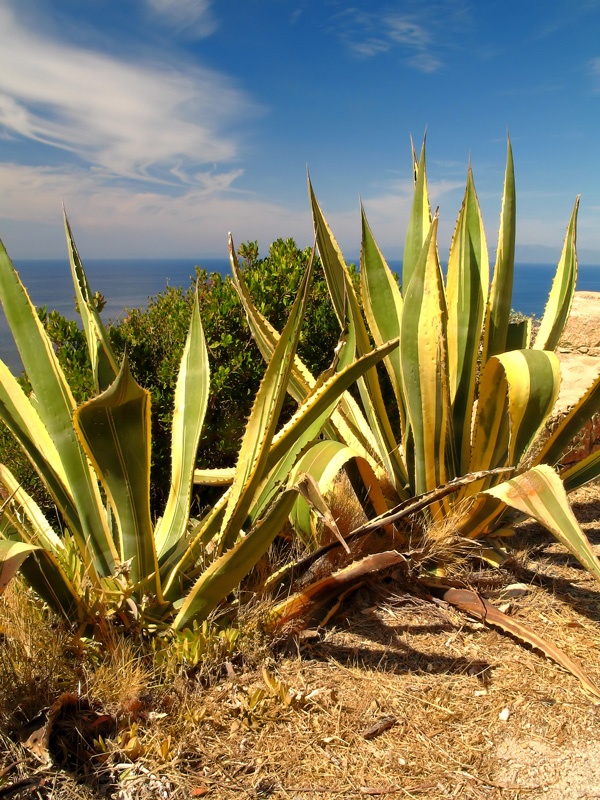 Recent studies have found that one way to successfully short-circuit COVID-19 is by way of a healthy, responsive, and robust immune system. In fact, it may be one of the most important protective factors that we have against all diseases. In a very recent study of how the immune system of a healthy individual responded to COVID-19, scientists in Australia, “showed that even though COVID-19 is caused by a new virus, in an otherwise healthy person, a robust immune response across different cell types was associated with clinical recovery, similar to what we see in influenza,” On the other hand, a depressed immune system leads to grave illness and possibly death.
Recent studies have found that one way to successfully short-circuit COVID-19 is by way of a healthy, responsive, and robust immune system. In fact, it may be one of the most important protective factors that we have against all diseases. In a very recent study of how the immune system of a healthy individual responded to COVID-19, scientists in Australia, “showed that even though COVID-19 is caused by a new virus, in an otherwise healthy person, a robust immune response across different cell types was associated with clinical recovery, similar to what we see in influenza,” On the other hand, a depressed immune system leads to grave illness and possibly death.
The program should focus on the elimination of the many NCDs that contribute to serious and protracted vulnerabilities to coronavirus and other infectious diseases, and, correspondingly, depress the immune system. Again, it bears mentioning that diabetes, drug abuse, heart disease, cancer, obesity, poor diet, and high blood, among others, drastically increase severe illness and death when one contracts COVID-19.
The good news is that, for most people, nearly every one of these conditions is manageable, and a number of them are curable through lifestyle changes alone. Chronic respiratory diseases, such as asthma and other autoimmune disorders, also heighten the negative effects of COVID-19. Asthma is an inflammatory disease that has genetic and environmental components, but it is not a death sentence, nor is it well understood. Perhaps the most promising findings these days regarding the treatment of asthma and other autoimmune diseases has to do with the health of our gut. Our gut is a major part of our microbiome which harbors trillions of bacteria, viruses, and fungus; many of them helpful and some deadly. To put our human microbiome into a tribal context, think of all of the trillions of living microbes within and on us as “the new great circle of life,” that is divided into countless numbers of species all living together, not always harmoniously, doing their jobs of keeping us healthy, making us sick, or just hanging out.
Scientist Dr. Rob Knight, of the American Gut Project, as well as many other microbiome scientists have found strong connections between a person’s gut health and the immune system, especially in regard to asthma, diabetes, obesity, Alzheimer’s disease, Crohn’s disease, rheumatoid arthritis, colon cancer, and may other serious conditions. Individuals with a healthy and diverse microbiome (meaning that they have many important and helpful microbial species in their guts) are less impacted by harmful health conditions. Moreover, exercise, a high fiber diet, a no sugar diet, meditation and prayer, and fasting, all traditional Indigenous lifestyle practices, dramatically improve gut health, and help to heal a number of physical and emotional disorders.
Emotional illnesses resulting from trauma and chronic stress, such as depression and anxiety, also make our folks more vulnerable to the ugly effects of COVID-19, seasonal flu, and bacterial infections. Emotional disorders zap our immune systems. But, the good news is that many emotional conditions are also treatable through lifestyle changes. Activities such as exercise, dancing, singing, laughter, humor, adequate sleep, prayer, meditation, fasting, healthy diet, social support, and ceremony, supercharge the immune system, and make a huge difference in our well-being. None of these require drugs, visits to the doctor, painful injections, invasive procedures, or surgery. And, every one of them are a part of a traditional Indigenous lifestyle.
While hand washing, staying home, social distancing, and wearing a face mask, are important public health practices to prevent contracting and spreading COVID-19, they do little to improve the robustness of our immune system, or our physical, emotional, and spiritual well-being.
So, what can we do to mediate the effects of the current pandemic and to prepare ourselves for the next round of infectious diseases? First, it’s important to realize that we have an amazing amount of control over many NCDs. With the right intention and actions, we can eliminate diabetes, obesity, high blood pressure, heart disease, strokes, cancers, autoimmune conditions, depression, and anxiety disorders, within only a few years. These diseases shorten our lives, decrease its quality, and depress our immune system making us much more vulnerable to flu, viruses, and colds.
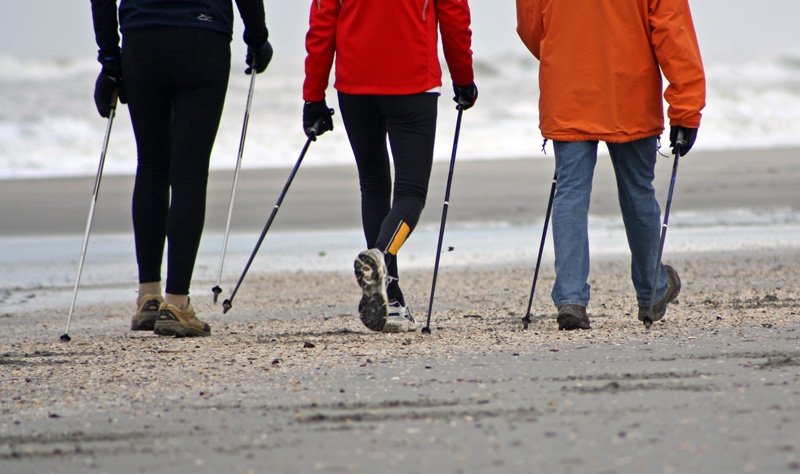 Second, to eliminate NCDs, we must focus on making our immune system more resilient and robust by radically increasing our amount of movement, exercise, and overall strength. Professor Herman Pontzer, an evolutionary anthropologist who studies the relationship between human evolution, exercise, diet, and health, says that we humans evolved to exercise and move and that “exercise is not optional. It is essential.” According to recent research on hunter-gatherer tribes, the current recommendations by western science of 30 minutes of exercise a day appears to be wholly inadequate. Indigenous hunter-gatherer populations who have the best cardiovascular health in the world, on average, take 15,000 to 19,000 steps a day, which is about 7 to 9 miles. Prior to the invention of Indigenous agriculture, this is the distance that most of our ancestors achieved during their daily hunting and gathering expeditions. Walking and running melts obesity, reduces blood pressure, helps to eliminate depression and anxiety, improves sleep, and strengthens our muscles and bone. Both improve our brain function, increase our life expectancy, and contribute to healthy genetic expression. During the time of COVID-19, we need to be getting outside every day, several times a day, moving, walking, running, doing yardwork, bending, squatting, laying on the ground pushing ourselves up, pushing and pulling, reaching, and stretching. However, getting this amount of exercise while being cooped up in our houses, will be difficult at times, which brings us to our next best option: ancestral eating and diet.
Second, to eliminate NCDs, we must focus on making our immune system more resilient and robust by radically increasing our amount of movement, exercise, and overall strength. Professor Herman Pontzer, an evolutionary anthropologist who studies the relationship between human evolution, exercise, diet, and health, says that we humans evolved to exercise and move and that “exercise is not optional. It is essential.” According to recent research on hunter-gatherer tribes, the current recommendations by western science of 30 minutes of exercise a day appears to be wholly inadequate. Indigenous hunter-gatherer populations who have the best cardiovascular health in the world, on average, take 15,000 to 19,000 steps a day, which is about 7 to 9 miles. Prior to the invention of Indigenous agriculture, this is the distance that most of our ancestors achieved during their daily hunting and gathering expeditions. Walking and running melts obesity, reduces blood pressure, helps to eliminate depression and anxiety, improves sleep, and strengthens our muscles and bone. Both improve our brain function, increase our life expectancy, and contribute to healthy genetic expression. During the time of COVID-19, we need to be getting outside every day, several times a day, moving, walking, running, doing yardwork, bending, squatting, laying on the ground pushing ourselves up, pushing and pulling, reaching, and stretching. However, getting this amount of exercise while being cooped up in our houses, will be difficult at times, which brings us to our next best option: ancestral eating and diet.
Third, it is critical to make major, radical changes in our diet. For nearly every one of us, that means returning to an ancestral plant-based diet, with lots of fiber, no sugar, low salt, lots of water, and a much lower intake of animal protein and fat. Plant-based diets are not only traditional, they contribute to a healthy gut. Research shows that gut bacteria are directly strongly associated with the quality of one’s overall health. An unhealthy gut is linked to chronic inflammation which contributes to many of the NCDs. Inflammation is associated with many serious health conditions including neurodegenerative diseases like Alzheimer’s. The first choice in a plant-based diet should come from wild plants, grasses, berries, vegetables, and plants that can be made into immune-boosting teas, such as echinacea. While the availability of wild foods has dramatically declined due to colonization of Indigenous lands, tribal people can start working to restore and protect these areas as natural gardens and gathering areas. In the meantime, a return to plants and agricultural foods that were cultivated by our ancestors can sustain us in the short term.
Fourth, reducing stress through prayer and meditation practices is critical not only during the COVID-19 pandemic, but also long after it has subsided. Contemplative practices such as prayer, sacred songs, and meditation form the cornerstone of sacredness and spirituality in almost all Indigenous cultures. While there should be no limit in the amount of time we spend meditating and praying, western research shows that engaging in regular mindfulness prayer and meditation, 20 minutes, twice a day, helps to decrease inflammation in our bodies, increases feel good chemicals like serotonin and dopamine, and helps improve healthy, protective gene expression that protect us from disease. One Buddhist monk said that one should practice meditation at least 20 minutes a day. If you don’t have time, you should practice for one hour. One key reminder: if you’re going to use prayer, try to avoid praying to an angry, critical, distant, I’m going to get you, kind of god. Like many of our ancestors, pray in gratitude for all the good, positive in the world. Neurotheology studies show that a loving, kind benevolent god activates neurons of compassion, while a god to be feared activates the ancient fear and uncertainty networks in the brain, causing even more anxiety if you think that your god is going to eternally punish and roast you for going against his will.
Fifth. Just like we evolved to exercise, we evolved to fast regularly from eating. For most of us, it’s not what we eat that makes us healthy and improves the robustness of our immune system, it’s not eating intermittently every day. Western research now demonstrates what our are ancestors already knew about not eating. When we eat less or increase our time between our first and last meal of the day, we live longer, get less chronic disease, lose weight, gain muscle, and increase the number of our brain cells, which, again, is especially important in the age of neurodegenerative diseases such as Alzheimer’s. For women, studies show that 14 hours between the last meal of the day and the first meal of the next is optimal. For men, 16 hours is optimal. For example, if your last meal is at 6 pm., your next meal should be at 10 am the next morning. The number of hours between the first and last meal can be increased as one gets accustomed to fasting intermittently. Diabetics should check with a competent health provider to gauge when or if they can begin a fasting lifestyle.
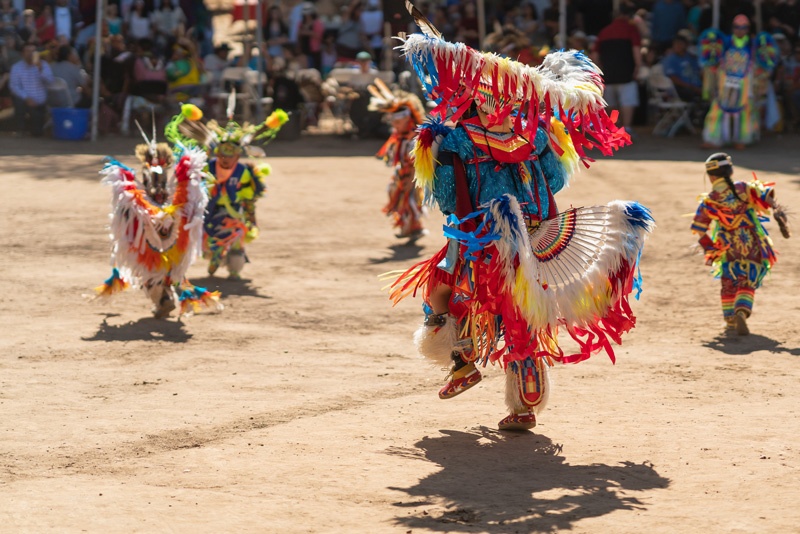 Sixth. Attitude is everything. A positive, happy disposition is a must. Even if you don’t feel positive, happy, or like laughing, do it anyway. Laughter, humor, and playful teasing are an important part of Indigenous cultures – and cultural neuroscience research shows that humor and laughter are not only good for us, they are an important marker in our genetic blueprint. When we laugh, smile, and feel good, we increase our happy-making neurochemicals, reduce our blood pressure and resting heart rate, relax our arteries, and increase healthy, protective genetic expression. So, laugh at COVID-19. Count coup on it. Humiliate it. Shame it. Bad mouth it. Stick your tongue out at it. But, just make sure your social distancing or sheltering is in place when you do it.
Sixth. Attitude is everything. A positive, happy disposition is a must. Even if you don’t feel positive, happy, or like laughing, do it anyway. Laughter, humor, and playful teasing are an important part of Indigenous cultures – and cultural neuroscience research shows that humor and laughter are not only good for us, they are an important marker in our genetic blueprint. When we laugh, smile, and feel good, we increase our happy-making neurochemicals, reduce our blood pressure and resting heart rate, relax our arteries, and increase healthy, protective genetic expression. So, laugh at COVID-19. Count coup on it. Humiliate it. Shame it. Bad mouth it. Stick your tongue out at it. But, just make sure your social distancing or sheltering is in place when you do it.
Sixth, singing and dancing are powerful healers. Both raise the level of endocannabanoids in our brains which are associated with reducing pain, helping us sleep, and improving our mood and memory. So, every time, you get up from sitting do your best, most passionate dance as you go to the next room and sing with uninhibited emotion throughout the day. Learn new dances. Dance with your kids, parents, partner, dogs, cats, and wolves. Learn to sing new songs and sing them solo or with your family or with your howling dog. Make time to sing and dance throughout the day.
Seventh. Sleep. Good sleep. Sound sleep and regular sleep are some of the most important non-activities that we can do to improve our health and immune system. Deep sleep helps restore our insulin, leptin, and ghrelin sensitivity which are involved with preventing diabetes and obesity. Deep, regular sleep helps us clear out the daily cellular junk that accumulates in our brains, such as amyloid proteins which are a hallmark of Alzheimer’s disease. We live in a sleep-deprived world and we must work hard to get a good night’s sleep.
These are only a few disease prevention strategies that I believe will enable us to improve our overall health and immune system. All of the suggestions that I have made are supported by western science, but more importantly, by years and years and years of Indigenous evidence-based science and wisdom. Each is a lifestyle practice that was central to the everyday lives of our ancestors and they must now become deeply embedded into our own lives. Western approaches in medicine and prevention have proved to be a colossal failure for eliminating the NCDs among Indigenous peoples and have done very little to improve our overall health. Now, more than ever is the time to make the big shift to radically improve our health and boost our immune system through these and other traditional preventive measures. If we engage in dramatic lifestyle changes now, not tomorrow, but now, our people will be much more prepared to deal with what Laurie Garrett has referred to as, “The Coming Plague.”
Michael Yellow Bird, MSW, PhD (Arikara and Hidatsa)Dean and Professor, Faculty of Social Work, University of Manitoba
(Bio)
_____________________________________
[1] KMHA FM Radio: The Voice of the Mandan, Hidatsa, Arikara Nation: https://www.facebook.com/kmha913/videos/635822916980196/
[2] CBC News, Calgary police charge man over threat to spread COVID-19 to Indigenous people: https://www.cbc.ca/news/canada/calgary/calgary-police-covid-19-threats-charge-investigation-1.5517980

